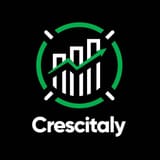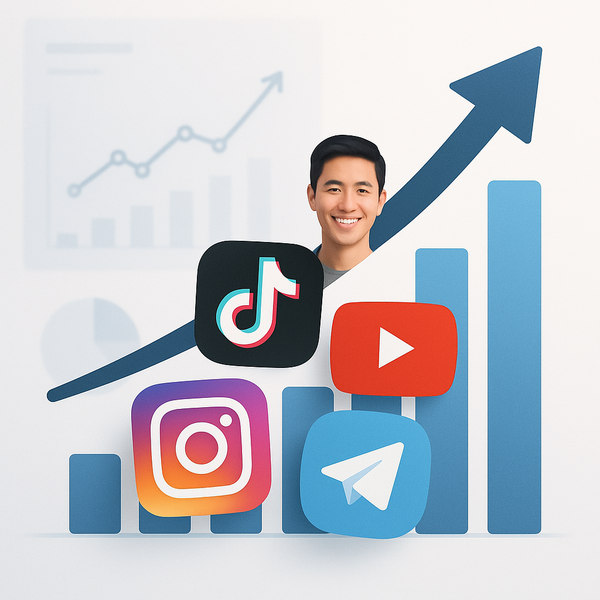The Psychology of Engagement in Social Media Growth
How understanding human behavior can power your success on Instagram, TikTok, YouTube, and Telegram
In early 2023, a TikTok creator with just 800 followers went viral—her video hit 1.8 million views in under a week. No paid ads. No celebrity shoutout. Just a clever blend of emotional storytelling and irresistible user engagement tactics. What happened?
The answer lies in the psychology of engagement—a field that’s redefining how creators, marketers, and SMM panel pros strategize growth. Whether you’re pushing a product or building a personal brand, understanding what makes people double-tap, comment, or share is more than a soft skill—it’s a growth engine. Let’s dive in.
Why Psychology Is the Secret Weapon of Social Media
Behind every viral post and thriving account is a clear understanding of human behavior mechanics. From dopamine-driven scrolls to FOMO-fueled shares, the platforms may differ, but the brain’s wiring doesn’t.
The Science of the Scroll
- Dopamine Loops: Platforms like Instagram and TikTok trigger reward systems in the brain. Notifications, likes, and loops are engineered to keep users hooked.
- Social Proof: We’re more likely to engage with content already endorsed by others—comments, shares, and follower counts matter more than ever.
- Cognitive Load: Simpler content often performs better. Our brains resist complexity during fast scrolling. Visual-first messaging works because it demands less processing.
“Every time you design a caption, choose a thumbnail, or set a posting time, you’re making a psychological decision—even if you don’t realize it.”— Jenna Park, behavioral marketer and digital strategist
Platform by Platform: Engagement Psychology in Action
Instagram: Visual Cues & Community Signals
Instagram runs on aesthetics and affirmation. But beyond the grid, real engagement sprouts from perception. Color psychology, facial expressions, and symmetry play key roles in post effectiveness.
- Use faces: Posts featuring human faces get 38% more likes, according to case studies.
- Ask questions: Posts that end with a question prompt 23% more comments on average.
- Story stickers: Polls and quizzes tap into interactive engagement—think control theory in psychology.
TikTok: Emotion, Humor, and Mirror Neurons
TikTok isn’t just about trends—it’s about syncing with viewer emotions in mere seconds. The brain’s mirror neurons make users feel what they see, which is why laughing, crying, or “that’s so me” content travels faster.
Creators who craft relatable scenarios or use duets tap into the contagious energy of empathy and social synchrony. Using storytelling formulas (e.g., setup-conflict-resolution) hooks attention like nothing else.
YouTube: The Halo Effect and Authority Triggers
YouTube thrives on perceived expertise and visual authority. Thumbnails with bold text and simplified visuals outperform cluttered designs. Long-form success often depends on whether the presenter communicates confidence and value early on.
Pair this with smart metadata and consistent niches, and viewers begin to associate your content with trustworthiness—a textbook case of the halo effect.
Telegram: Exclusivity and Tribal Connection
Unlike algorithmic feeds, Telegram emphasizes member loyalty and exclusivity. Channels function like tight-knit communities, where identity and “insider” knowledge drive interaction.
Effective strategies include:
- Scarcity tactics: Limited-time content or memberships create urgency.
- Direct voice: Use first-person narration to create intimacy.
- Group belonging: Hashtags, rituals, or shared inside jokes boost tribe-like engagement.
Engagement Metrics That Actually Matter (And Why)
It’s easy to chase vanity metrics—likes, followers, impressions—but they can distort what’s really happening. Here’s what to track that aligns with psychological hooks:
- Watch time: Shows emotional captivation on platforms like YouTube and TikTok
- Save and share rate: Indicates perceived value, especially on Instagram
- Click-through rate (CTR): Reveals curiosity and action—key psychological triggers
- Comment quality: Thoughtful replies suggest meaningful engagement over superficial likes
According to Crescitaly.com’s dashboard insights, accounts that focus on multiple dimensions of engagement—rather than just followers—achieve more sustainable growth and algorithmic favoritism.
Practical Psychological Tactics to Boost Growth
Ready to make engagement science work for you? Here are tested tactics crafted from cognitive principles and social behavior:
1. Use Curiosity Gaps
This is the storytelling technique that keeps users from scrolling away. Ask questions in captions that create a knowledge gap—then fill it in once they click or watch.
2. Reframe CTAs Around Identity
Instead of saying “Follow me,” say “If you’re a creator who learns by doing, you’ll want to follow this journey.” It activates self-identification, a powerful motivator.
3. Leverage Reciprocity
Give unexpected value upfront—free templates, original insights, or early access. Users naturally want to return the favor, often through likes, shares, or DMs.
4. Time Posts with Emotional Peaks
People scroll at specific emotional rhythms—commutes, lunch breaks, and late nights. Match your most emotionally charged content to these periods for stronger resonance.
The Role of SMM Panels in Scaling Psychology-Driven Content
Platforms like Crescitaly.com help amplify engagement triggers at scale. By targeting the right audience personas and timing delivery to signal algorithms effectively, SMM panels align tactical growth with behavioral science.
From quick follower bumps to smarter interaction boosts, panels are evolving beyond raw numbers—they’re becoming behavioral accelerators.
Final Thoughts: Creativity Meets Neuroscience
In 2024 and beyond, the creators and brands that win on social won’t just be the funniest or flashiest—they’ll be the ones that understand how people think, feel, and behave.
If you want more sticky content, interactive audiences, and growth that doesn’t vanish overnight, start thinking like a marketer and a psychologist. Every piece of content is a chance to engage the brain—and when you do that, the algorithm can’t help but follow.
Start by testing one psychological principle per post. Optimize from there. Measure wisely. And never forget: the best growth is human.
Meta Title: Psychology of Engagement in Social Media Growth
Meta Description: Use psychology to boost engagement on Instagram, TikTok, YouTube, and Telegram. Smart tactics for real social media growth.
Tags: Instagram, TikTok, YouTube, Telegram, SMM panel, social media psychology, engagement growth





